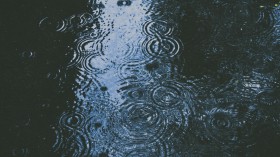Researchers have uncovered evidence that flowering plants evolved 100 million years earlier than previously believed.
Scientists generally place the advent of the flowering plant approximately 140 million years ago during the Early Cretaceous period based on an uninterrupted sequence of fossilized pollen beginning in this period.
In studying two drilling cores from northern Switzerland, however, Peter Hochuli and Susanne Feist-Burkhardt, both from the University of Zurich's Paleontological Institute and Museum, discovered six different types of pollen, which they estimate date back to the Early Triassic (between 252 to 247 million years ago) -- if not earlier.
In 2004, Hochuli and Feist-Burkhardt documented related flowering-plant-like pollen 3,000 km from their new discovery in cores from the Barents Sea. Those samples, they believe, come from the Middle Triassic.
Based on these two studies, Hochuli said: "We believe that even highly cautious scientists will now be convinced that flowering plants evolved long before the Cretaceous."
Pollen grains are the world's oldest fossils derived from flowering plants. Designed to protect the male cell needed for reproduction, they are far more robust than leaves, for example.
Studies based on molecular data have failed to reach a consensus regarding the age of flowering plants, with estimates ranging from the Triassic to the Cretaceous periods. Molecular estimates generally need to be based in fossil evidence; however, older fossils have not been available.
"That is why the present finding of flower-like pollen from the Triassic is significant," Hochuli explained.
The plants under examination existed in a time when both the Barents Sea and Switzerland lay in the subtropics, though the latter would have been much drier, suggesting the plants had a broad ecological range. Furthermore, the pollen's structure is such that it was likely pollinated by insects, and since another 100 million years would pass before the evolution of bees, the task was probably one left up to beetles.
© 2024 NatureWorldNews.com All rights reserved. Do not reproduce without permission.





